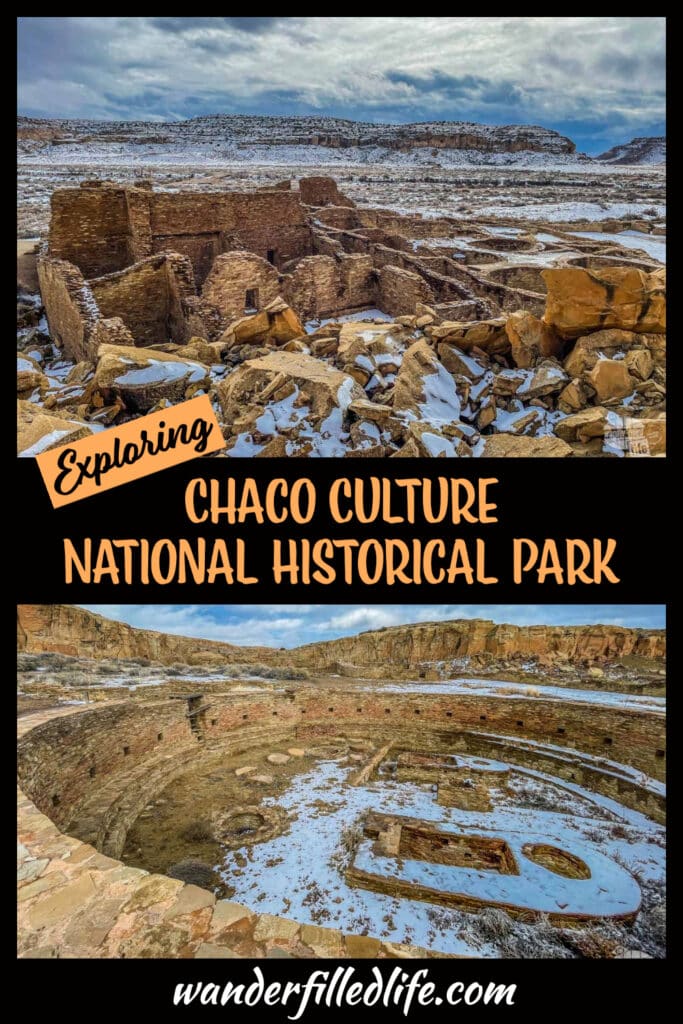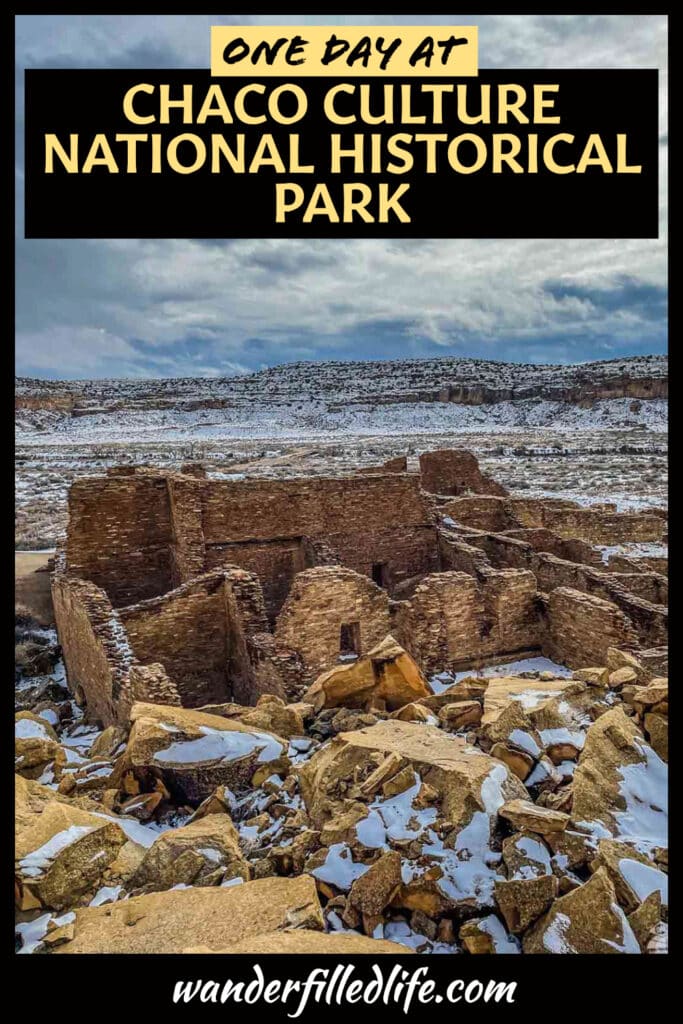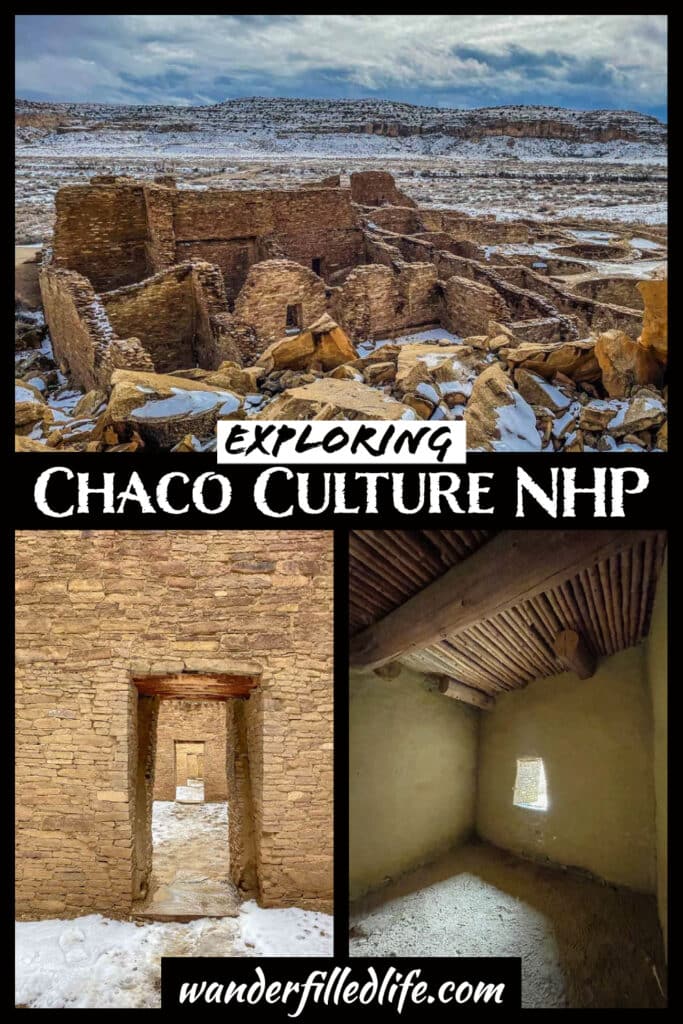Last Updated on February 20, 2024 by Grant
The American Southwest is full of archeological ruins of the Ancestral Puebloan people. The largest and most complex of these is found in Chaco Canyon, in northwest New Mexico. With just one day at Chaco Culture National Historical Park, you can walk through the ruins of several different buildings, view exhibits at the visitor center and hike through the high-desert landscape of the region.
Without really trying, we ended up making 2022 the year of the American Southwest. We spent time in southern Arizona over Spring Break, all over the Four Corners region over the summer and one final trip to northern New Mexico in December. Add in additional trips to the area and I think we’ve visited nearly all of the Ancestral Puebloan sites within the National Park Service, plus a few managed by the Bureau of Land Management and US Forest Service.
Check our our 2022 Year in Review

Of course, each site is different and special in its own way. But, I have to be honest and say that the sites can become a bit redundant. Still, we were notably impressed by what we found at Chaco Culture National Historical Park.
The size of the community and the complexity of the architecture is impressive by today’s standards. But these ruins date back to the mid-800s and this community formed the center of more than 150 great houses throughout the San Juan Basin spanning hundreds of miles. Yes, it’s a bit mind-blowing and why this site was named a UNESCO World Heritage Site.
So, let’s take a look at exactly what you can expect from a visit to Chaco Culture National Historical Park.
(Disclaimer: When we link to places where you can buy our stuff or places we stayed, we are using special codes that earn us commissions on the sales at no additional cost to you. Please see our Review Policy for more information.)
Getting to Chaco Culture National Historical Park
Chaco Culture National Historical Park is an extremely remote park, in a largely undeveloped area of northwestern New Mexico and can only be accessed by driving on dirt roads. Quite simply, this is not a park that you are going to pass by accidentally!
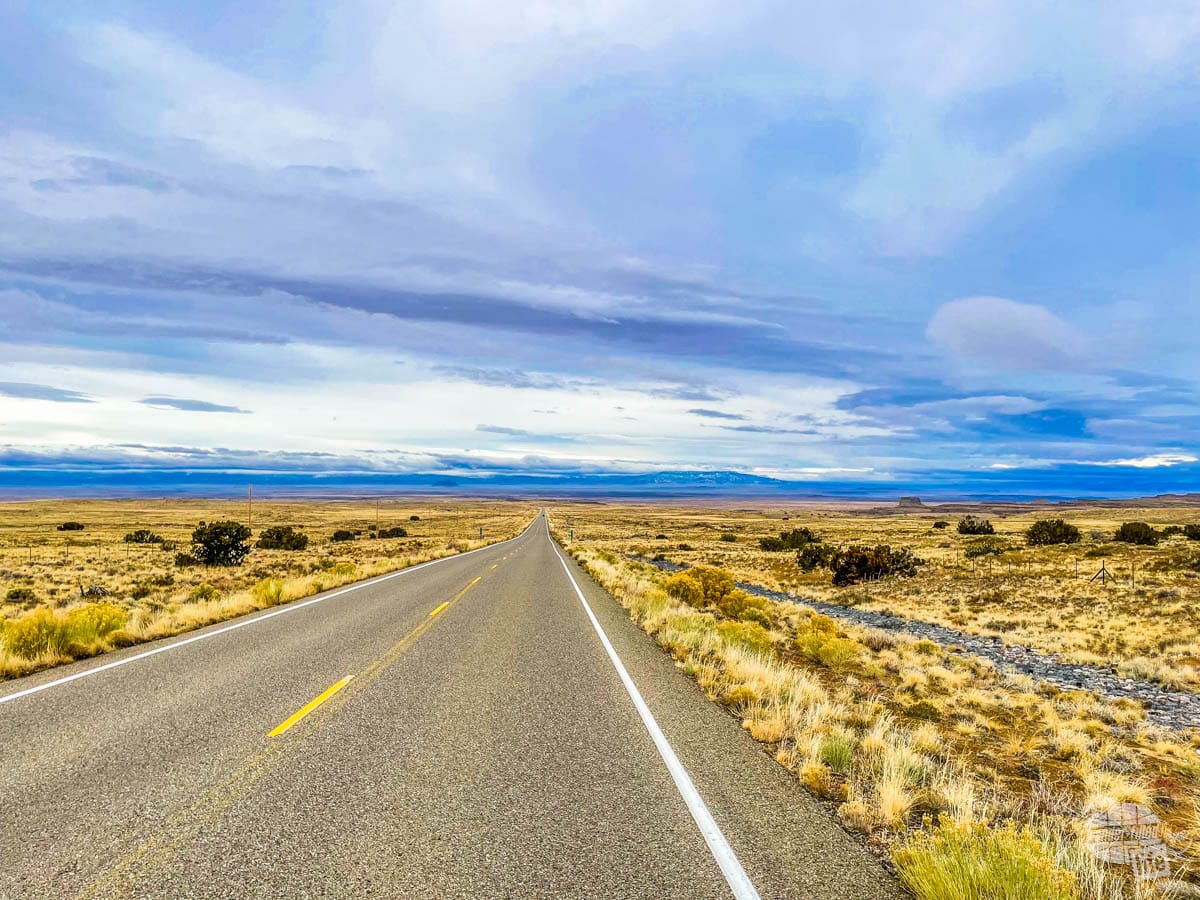
The closest moderately-sized town is Farmington, which is about 76 miles northwest of the park. Due to the unpaved roads, you’ll need nearly two hours to make the drive. Albuquerque is about 150 miles and three hours to the southeast.
From the north, you’ll access Chaco Culture National Historical Park by turning south off US Hwy 550. This is the way we came in, after visiting Bandelier National Monument and Valles Caldera National Preserve near Los Alamos. This is, generally, the best way to access the park but still includes 13 miles of rough, dirt road.
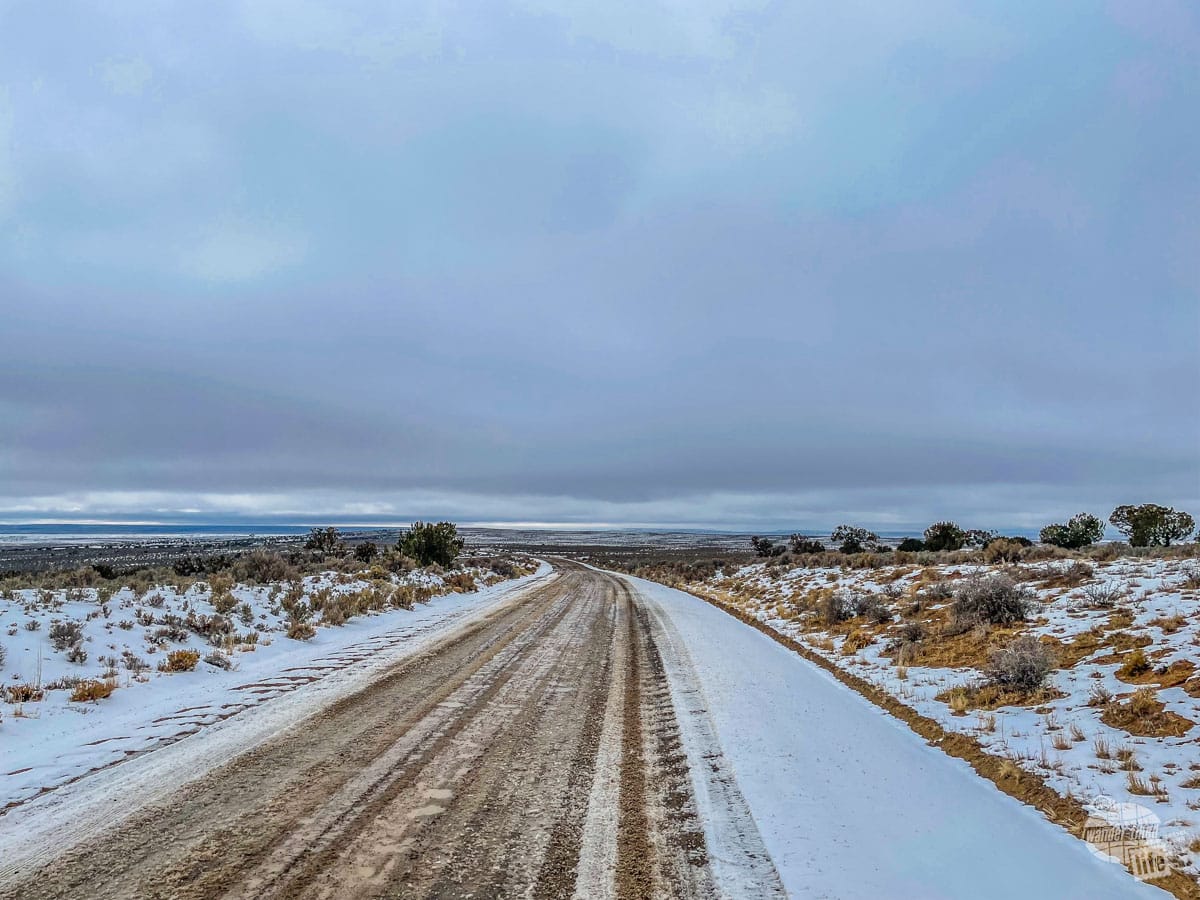
When we visited (late December 2022), there had been quite a bit of snow and rain in the days prior. For this reason, we made a point to call the park the day before to check road conditions. Honestly, I’d suggest that you call to check conditions regardless of the weather. This park is simply too remote to drive all the way out there and then have difficulty on the last leg of the route.
With the wet roads, there were definitely some very difficult sections, even in our F-150. We had four-wheel drive on for most of the unpaved section and still did a bit of slipping and sliding in a couple of places. We passed one vehicle that slid off the side of the road and was stuck.
According to the park’s website, the route from the south is not very well marked and can be very rough at best. These roads are rarely maintained and can easily become impassable. I would definitely call ahead if you are considering this route.
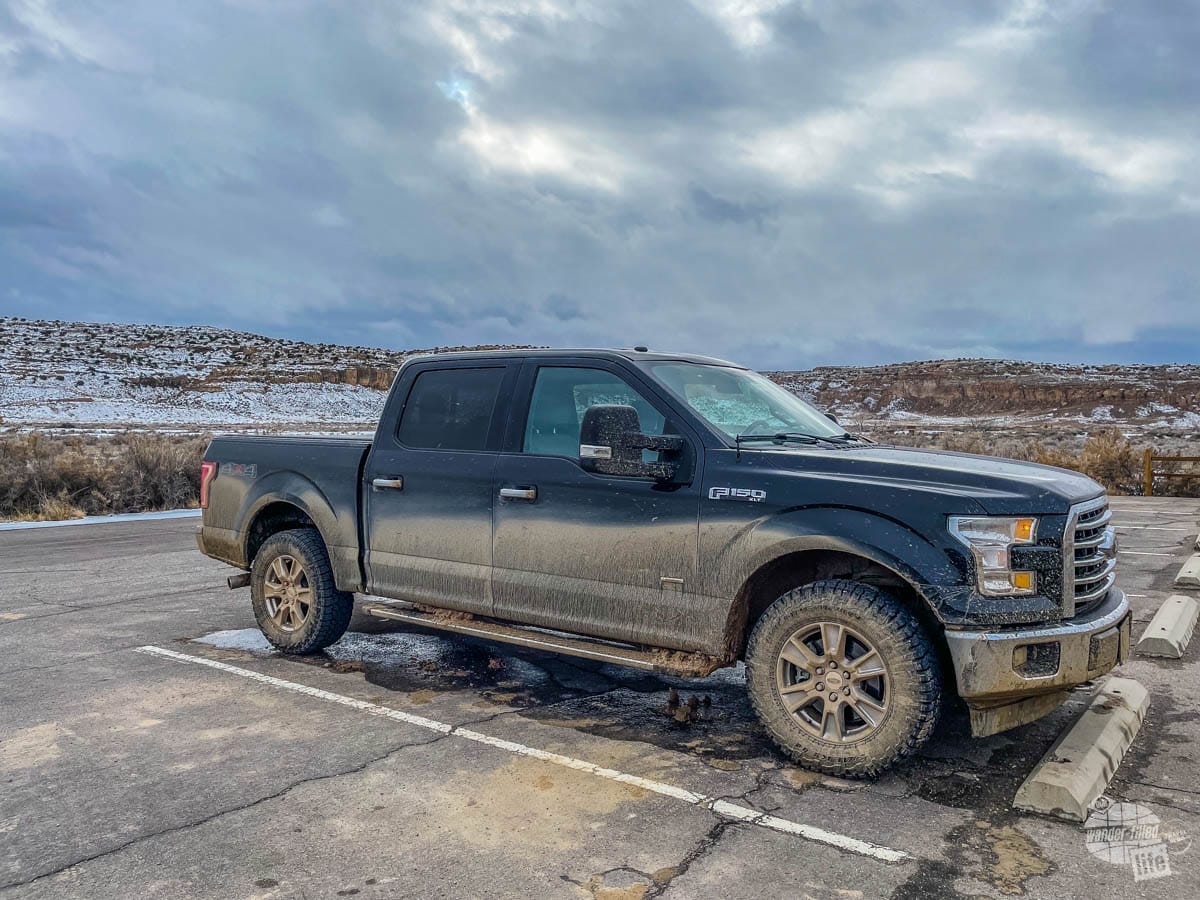
If the roads are dry, almost any vehicle should be able to make the drive from the north. But it is important that you know the current conditions and the capabilities of your vehicle. Expect getting any kind of help to be difficult or even impossible.
What to See and Do at Chaco Culture NHP
The good news is that once you arrive at the park, all roads are paved and easy to drive! As always, you should definitely make the visitor center your first stop. Be sure to talk to a ranger to get recommendations based on how much time you have.
Unfortunately, we only had a couple of hours. But, we were happy to follow the ranger’s suggestion to leave well before sunset and the park’s closing time just in case we had any issues on the road. As they said, if you’re not the last one out, then there’s still hope that someone could help you if you have any problems!

While at the visitor center, be sure to watch the park introduction film and walk through the museum/exhibit area. Unfortunately, display cases in the exhibit area are empty. After the visitor center was renovated in 2010, the park realized that the HVAC system was not able to balance out the harsh weather conditions here. Thus, the interior conditions are not adequate for the extremely delicate artifacts.
We certainly hope that the park will get this fixed soon so that the many artifacts that have been found here can be displayed. In the meantime, there are still some interesting informational signs and displays about the history of the park and the people who lived here.
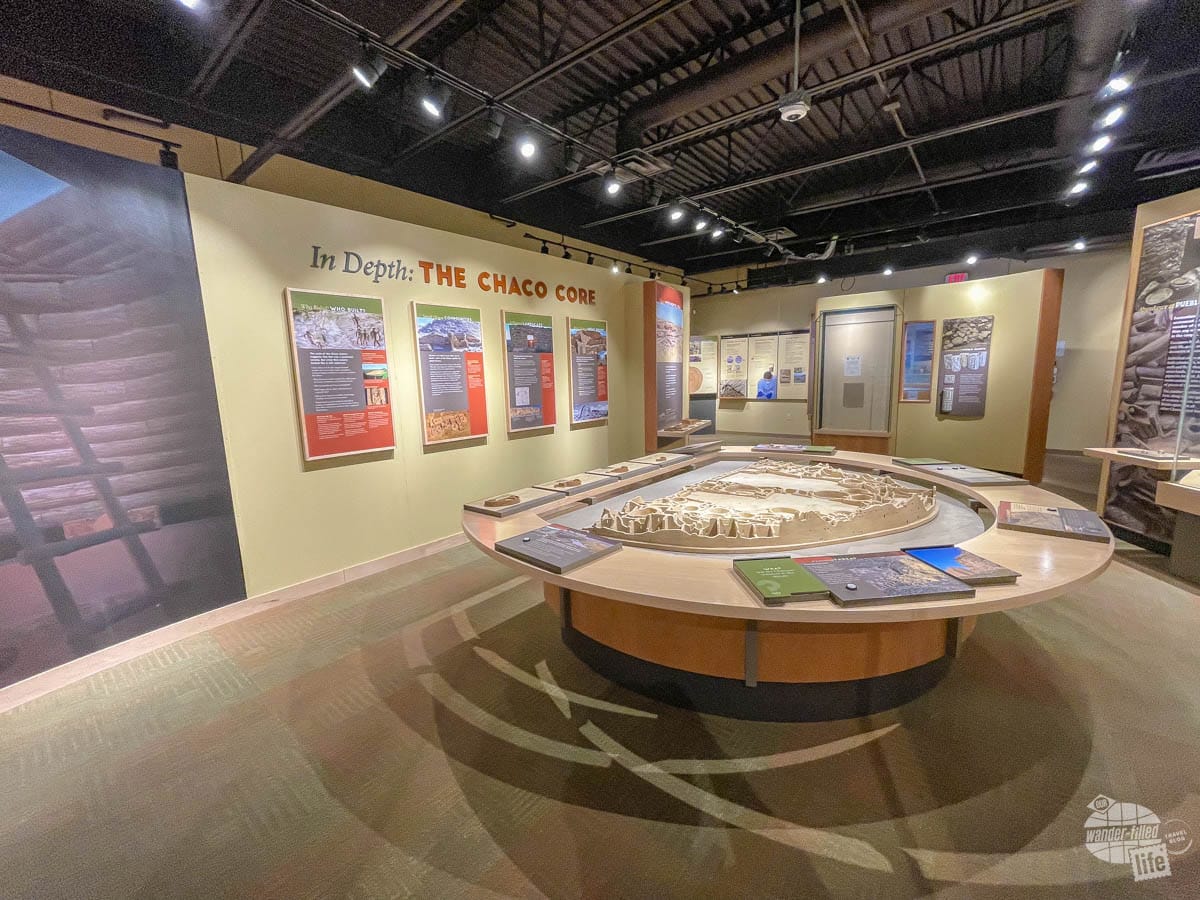
Before you leave the visitor center, consider purchasing a trail guide for any of the archeological sites you plan to stop at along the loop drive. Most have a few signs but the guides will provide much more information.
Canyon Loop Drive
The main area of Chaco Culture National Historical Park is accessed by a nine-mile one-way loop drive that starts just past the visitor center. Along the drive, there are six major sites that can be reached by relatively short walks from several different parking areas.

Since we were short on time, we took the ranger’s advice and only visited three sites, described below. If you have more time, I hope that you’ll explore some of the other stops.
Hungo Pavi
Our first stop was Hungo Pavi, which is an unexcavated great house. Here, a short trail leads you around the ruins of more than 150 rooms, a great kiva and an enclosed plaza. Even though the area is unexcavated, many of the walls are exposed and easy to view. The loop here is only about 1/4-mile and relatively easy but there are a few inclines and uneven surfaces.
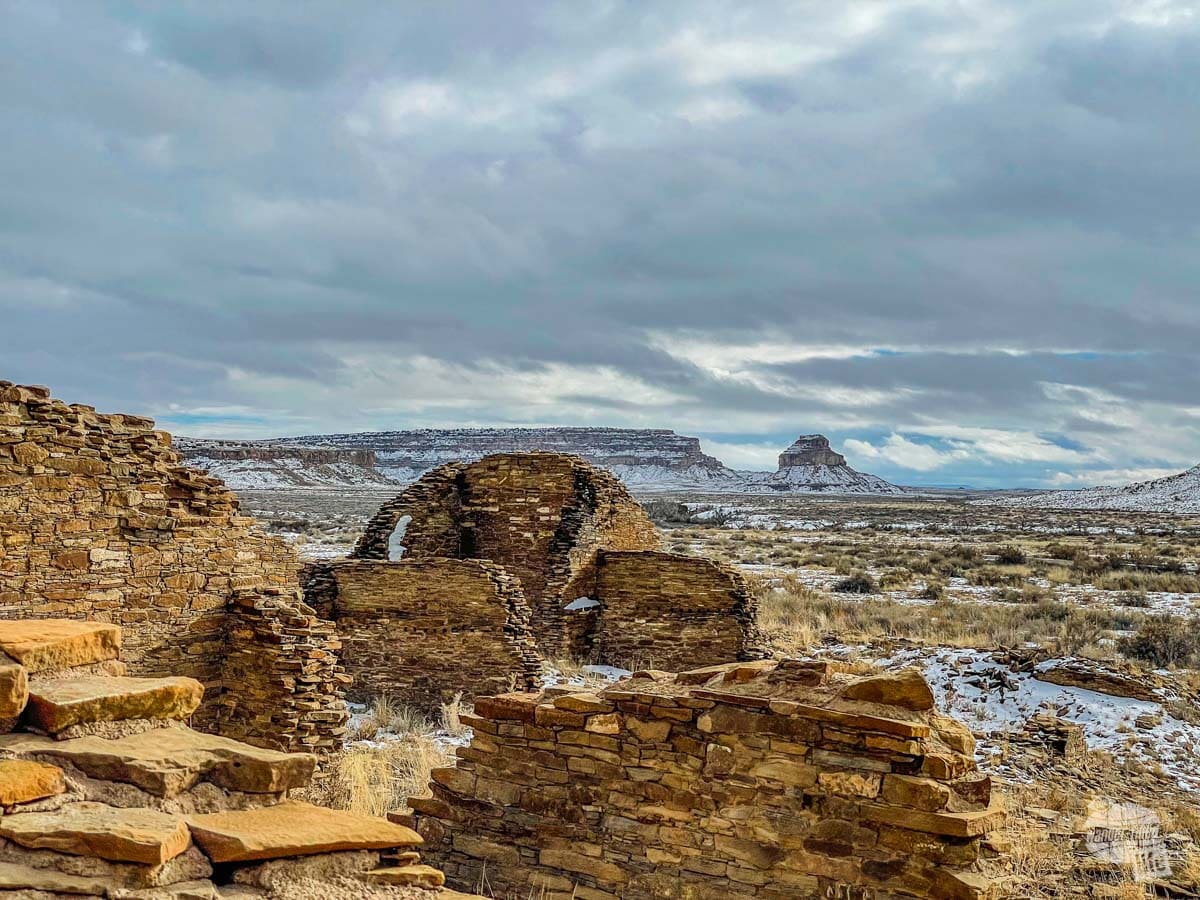
Chetro Ketl
The next parking lot provides access to the must-see site at Chaco Culture National Historical Park, Pueblo Bonito. This is the most thoroughly investigated cultural site in the park. Next to it (and accessed from the same parking area) is Chetro Ketl, the second largest Chacon great house. Connecting them is the Petroglyph Trail, along which you can view a variety of carvings and paintings on the canyon walls.
Walking around at Chetro Ketl and Pueblo Bonito was, by far, the highlight of our visit to Chaco Culture National Historical Park. What we enjoyed most about Chetro Ketl was being able to look down into the lower (underground) sections of the building. You can also see several kivas and the interconnected rooms that are common in Ancestral Puebloan buildings.

The 1/2-mile trail around Chetro Ketl is relatively easy but, again, does have some uneven surfaces. We also encountered a few puddles and muddy areas due to the rain and snow.
Following along the cliff wall, the Petroglyph Trail connects Chetro Ketl to Pueblo Bonito. Honestly, if you are visiting both sites, this is likely the shortest and easiest path between them. Plus, you get to see a few petroglyphs along the way. Additionally, the trail ends above the rear of Pueblo Bonito, giving you an elevated view of the great house!

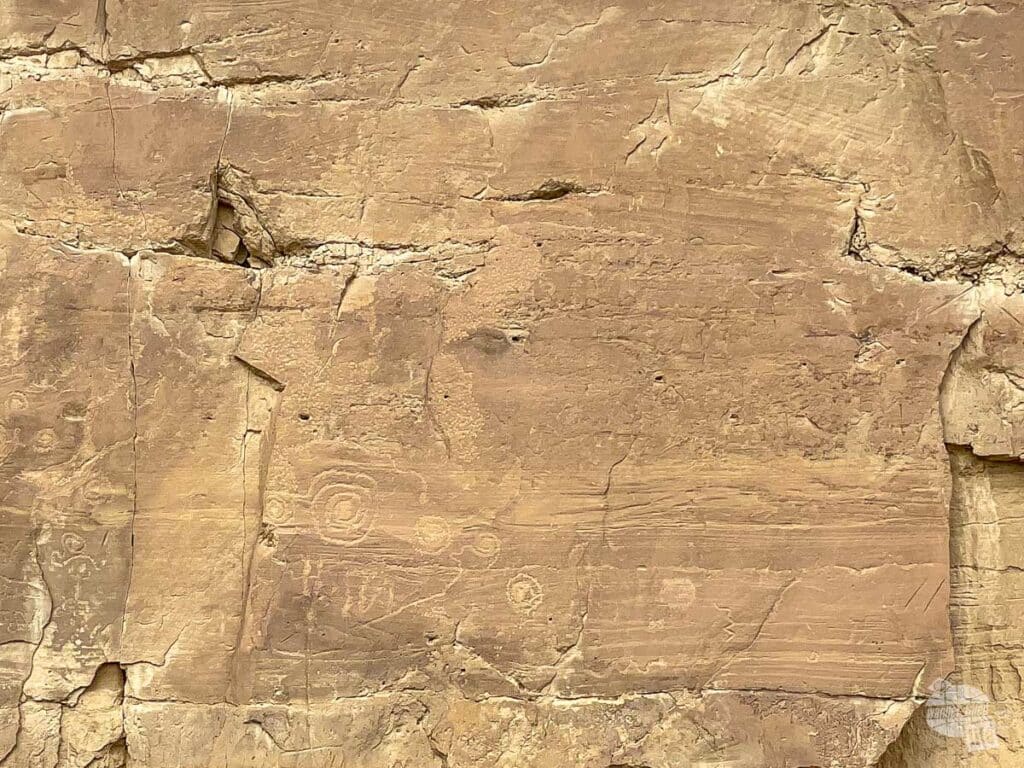
Pueblo Bonito
Pueblo Bonito is the largest great house and the core of the Chaco complex. It is also the only site where you can walk through the rooms. From the inside, it’s easy to see the engineering and detailed masonry. In particular, we enjoyed seeing the different types of doorways and techniques for building multiple levels.

It is estimated that Pueblo Bonito reached at least four stories and included over 600 rooms and 40 kivas! Even though we’ve now seen many different Ancestral Puebloan ruins, we were still amazed at this massive and impressive great house!
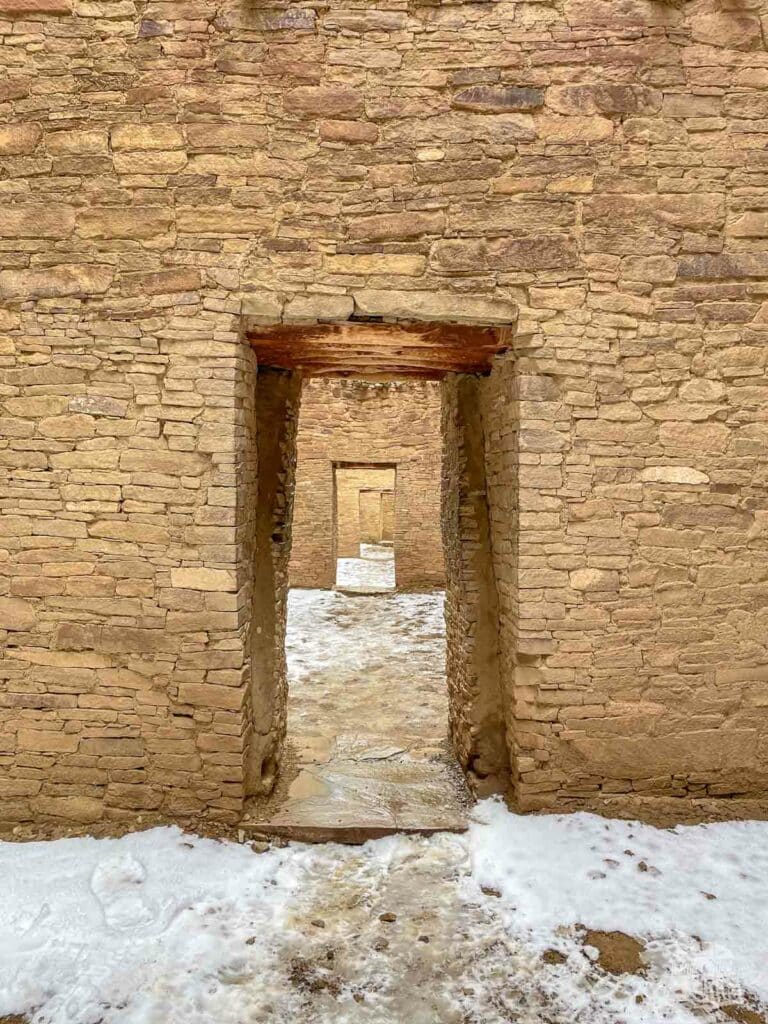
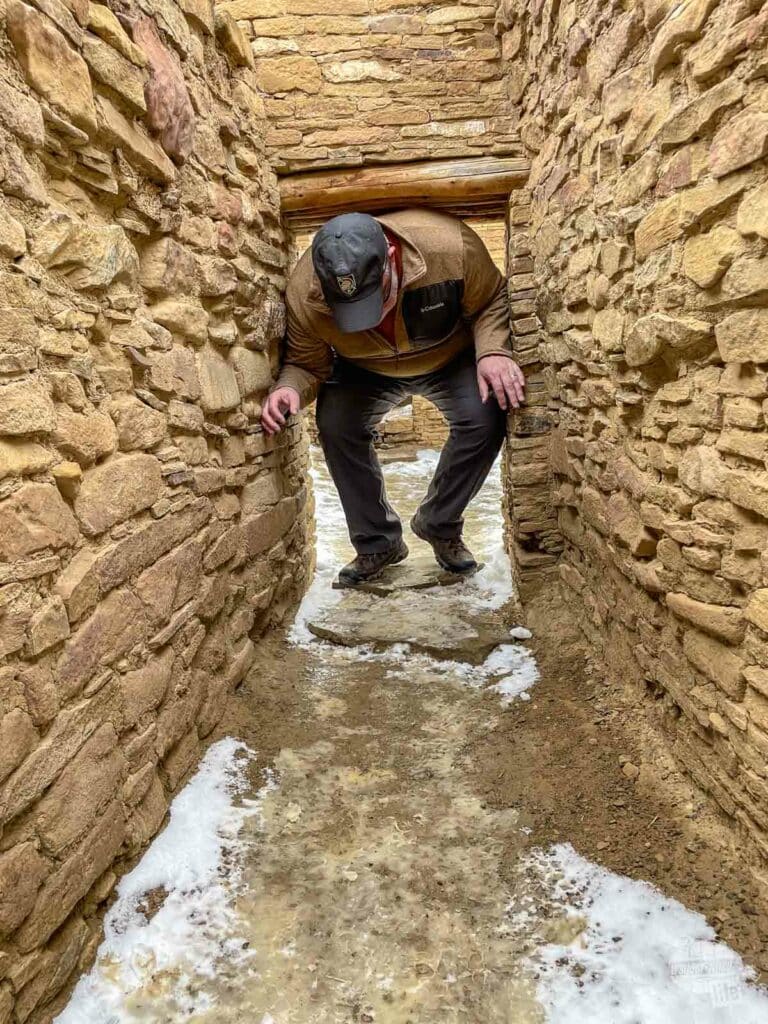
The trail here is a little longer (just over 1/2 mile) and weaves you through several different rooms. Some of these require stooping or squatting to get into. You can easily skip any portions that you need to. That said, I highly recommend you do the full tour if you can.
Hiking at Chaco Culture NHP
Accessing each of the aforementioned archeological sites does require a little walking. But, I would not call any of them hiking trails. If you are looking to do a longer hike, there are four to choose from, ranging from three to eight miles roundtrip.
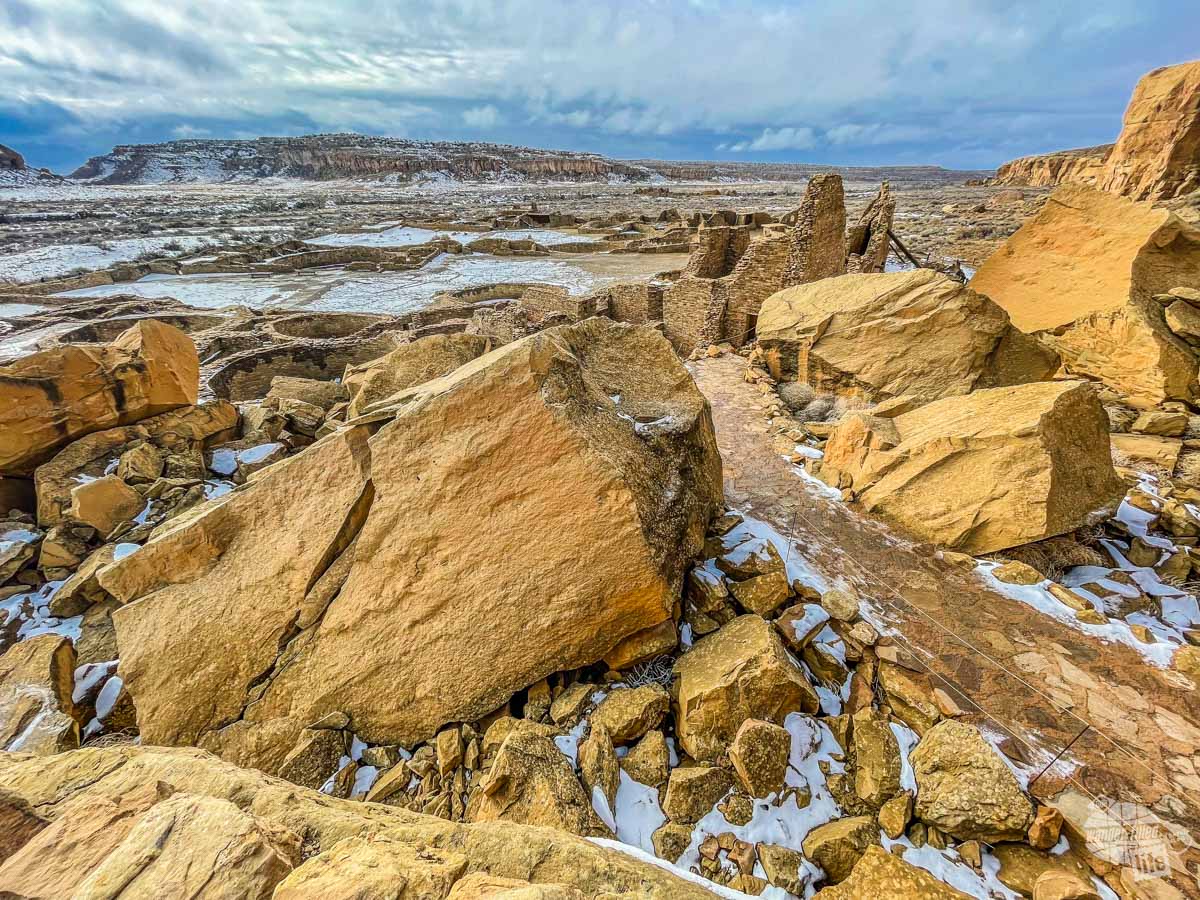
From my research, the one that I most want to hike is the Pueblo Alto Trail. This trail takes you up on the mesa top and provides views down onto Pueblo Bonito and the San Juan Basin. Seeing the ruins from above really would be spectacular and would provide a grand overview of the entire Chaco world.
Each of these trails does require a permit, so be sure to ask a ranger at the visitor center for details.
Where to Stay
As mentioned previously, Chaco Culture National Historical Park is a fairly remote park, so there really aren’t a lot of places to stay that are close by. We ended up driving over from Los Alamos, after a quick visit to Valles Caldera National Preserve that morning. While that worked ok, it did mean we arrived late in the day and didn’t have as much time as we would have liked.
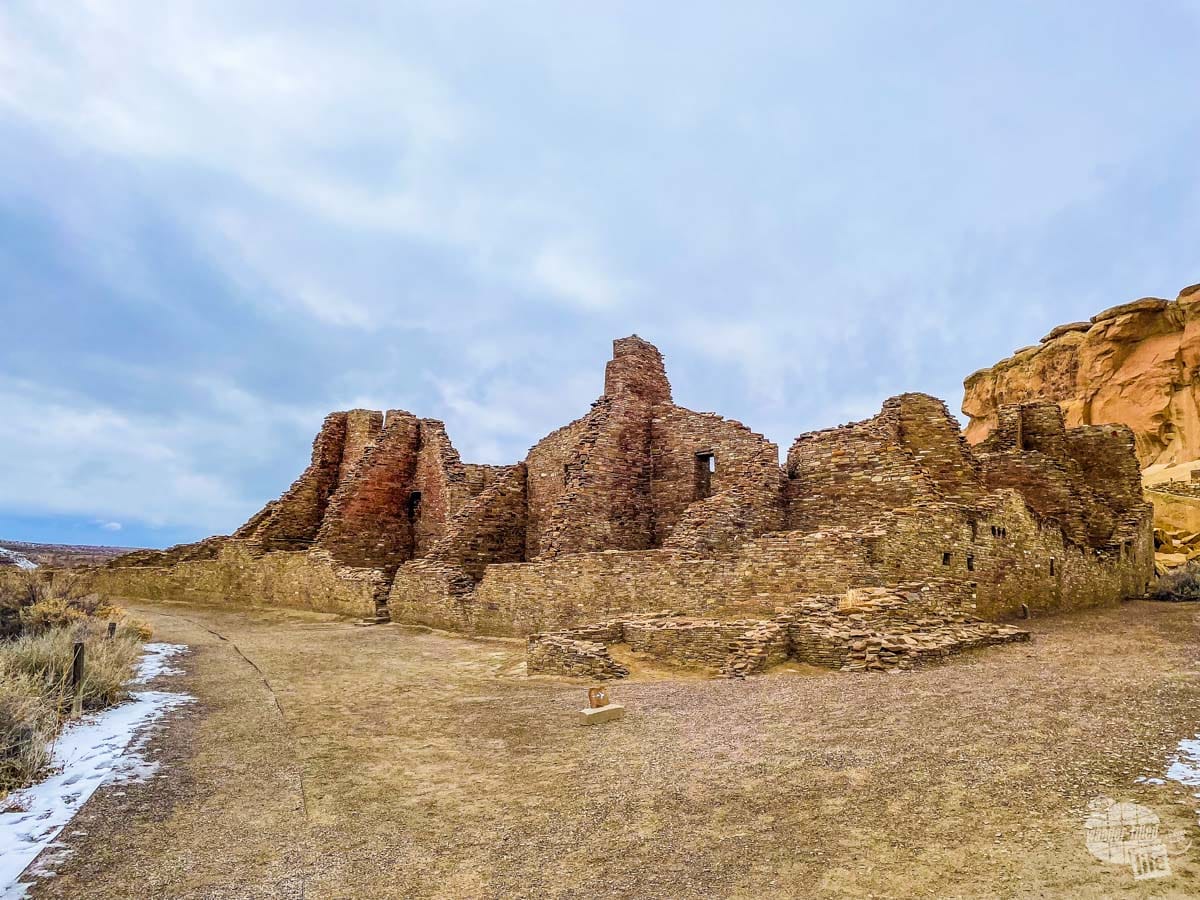
Following our visit to Chaco Culture NHP, we drove to Farmington and stayed at the Home2Suites. Farmington is actually a much larger town than we initially expected, providing most of the usual chain hotels and restaurants. Our hotel was quite comfortable and we enjoyed being able to get dinner at Chick-Fil-A, one of our hometown favorites. Typically, we seek out restaurants that we don’t have at home but after a long day of driving, we just wanted something quick and easy!
Read TripAdvisor Reviews | Book the Hotel
For campers, Chaco Culture National Historical Park’s Gallo Campground offers 32 sites and a restroom with flush toilets. There are no showers or any hookups, though. Five of the sites are designated for RVs only but the rest can accommodate tents or small RVs. Campground reservations can be made on recreation.gov on a 3-month rolling basis. Note: due to the rough roads in and out of the park, I wouldn’t necessarily suggest RV camping here.
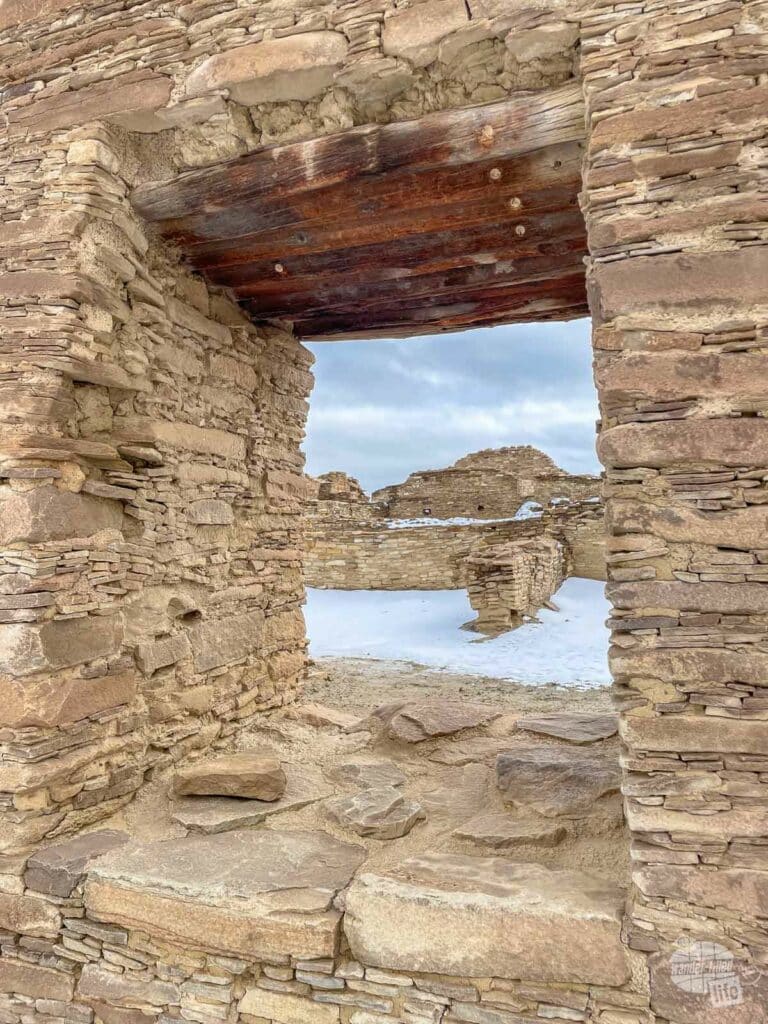
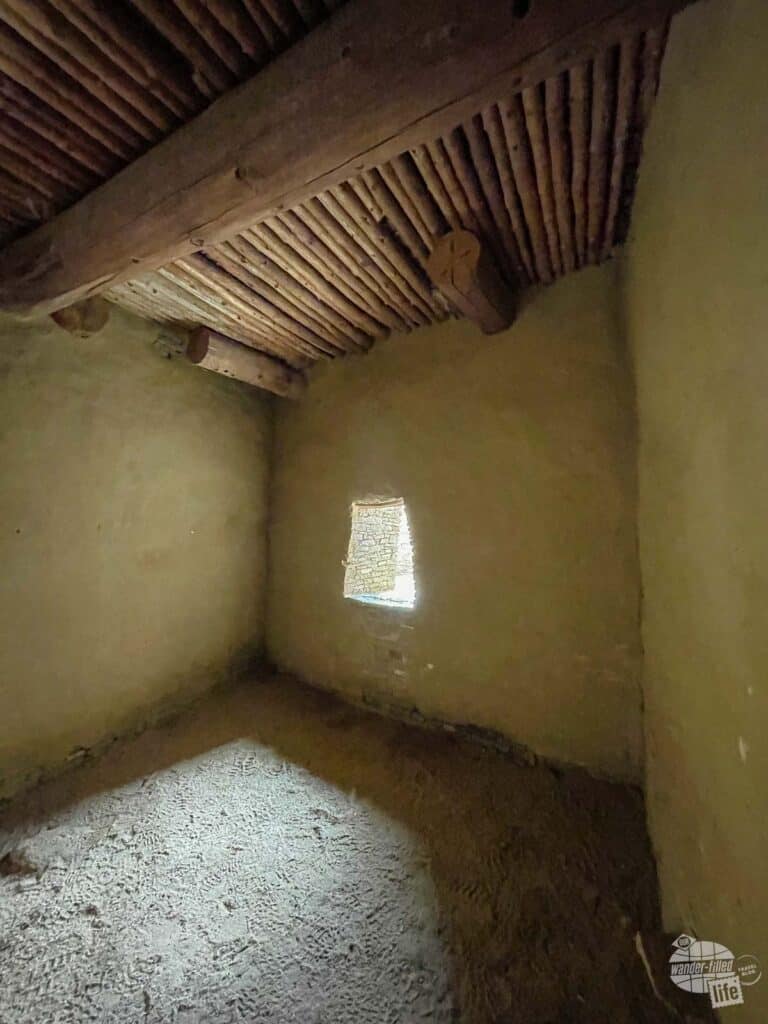
You’ll also find a few hotels in the small town of Cuba, to the east. It is such a small town, I probably wouldn’t recommend that unless you just need a place in that area based on your itinerary.
If you want to spend more than one day at the park, your best option is to camp at the park. Otherwise, I’d suggest staying in Farmington for one or two nights.
Other Sites Near Chaco Culture NHP
From Farmington, you could easily visit another Ancestral Puebloan site, Aztec Ruins National Monument. We previously visited this park a few years ago, as a day trip from Pagosa Springs, CO. That worked well for us, but Aztec Ruins NM is less than 30 minutes north of Farmington, so could easily be combined with a visit to Chaco Culture NHP.
At Aztec Ruins, you will have the opportunity to walk through a reconstructed Great Kiva and through intact pueblo rooms. We have now visited many different Ancestral Puebloan sites and this is one of the few (and definitely the most impressive) that had a reconstructed Great Kiva. While it was a neat experience, I’d probably appreciate it more now that I’ve seen so many other ruins.
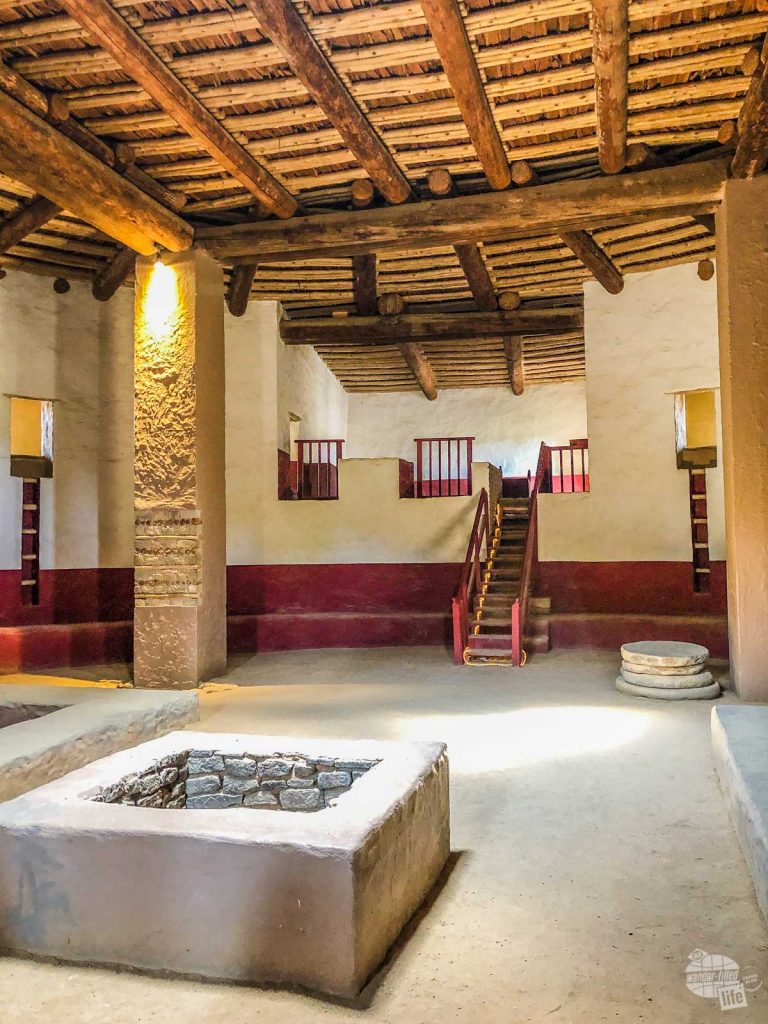

We only spent about an hour at Aztec Ruins NM and felt that we had a fairly thorough visit. That said, I don’t think it would be unreasonable to spend a little longer there.
Read more about Aztec Ruins and other things to do from Pagosa Springs.
Of course, the entire Four Corners region and, indeed, the American Southwest as a whole, are home to a plethora of natural, cultural and historical park sites. From cliff dwellings at Mesa Verde National Park (southwest Colorado) to sandstone buttes at Monument Valley (southeastern Utah) and the historic Hubbell Trading Post National Historical Site (northeastern Arizona), there’s more to this region than just dust.
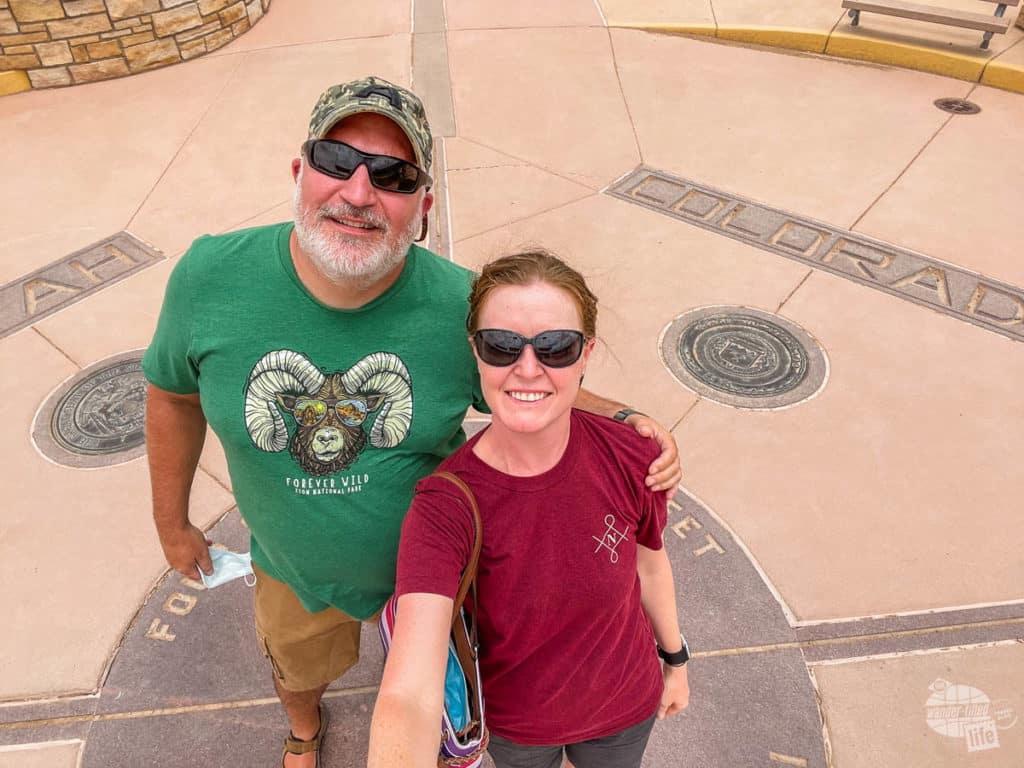
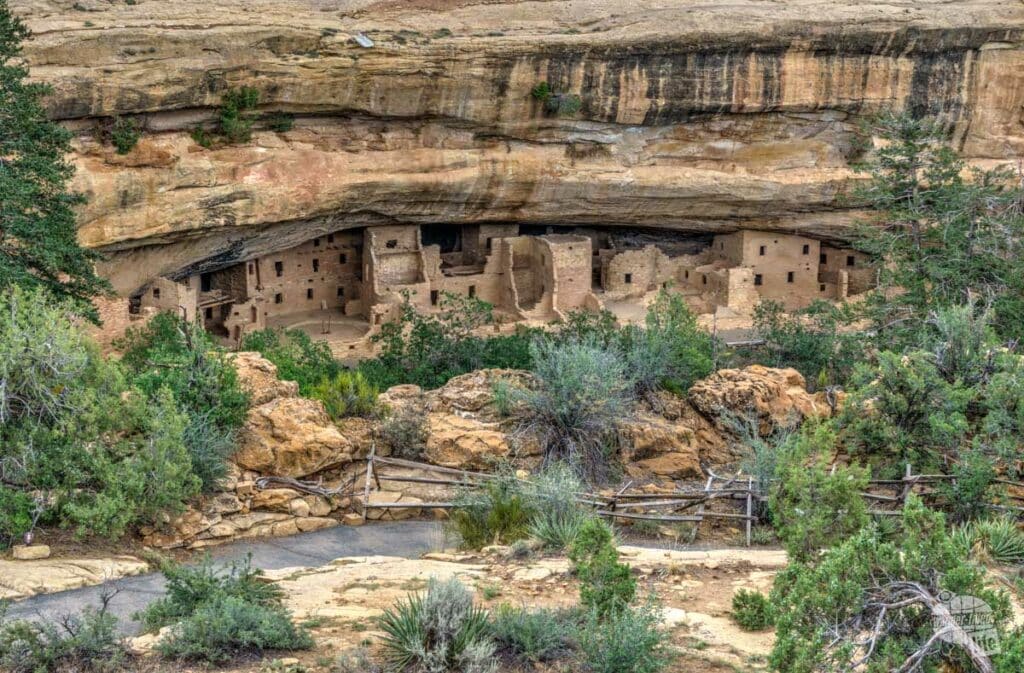
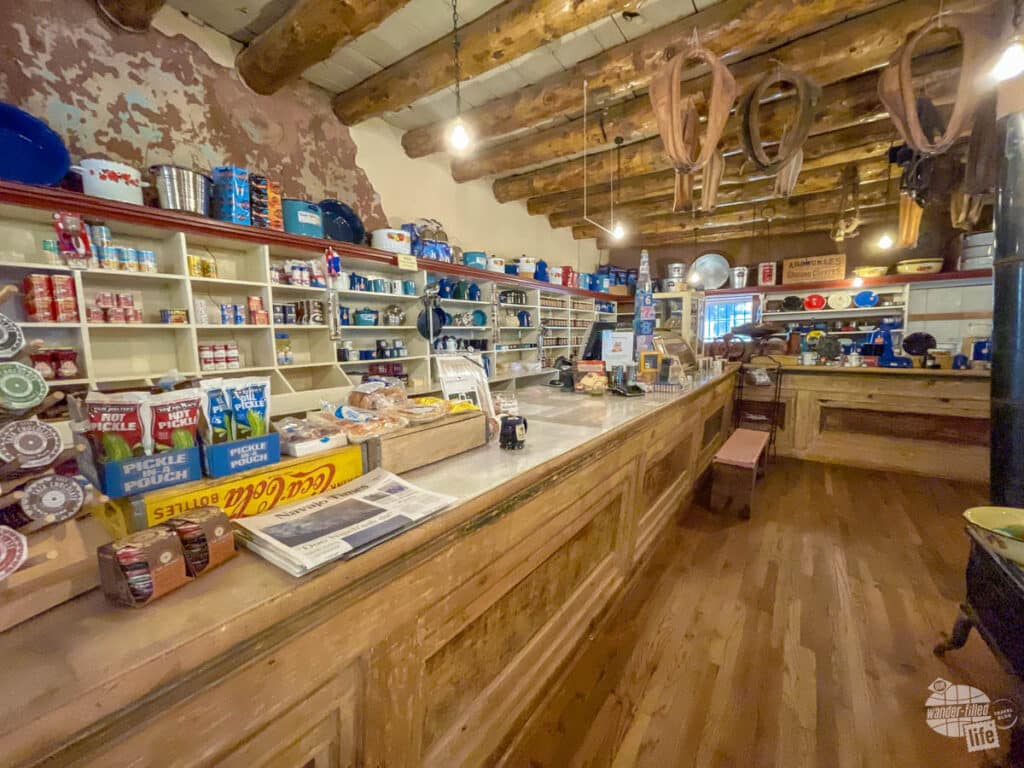
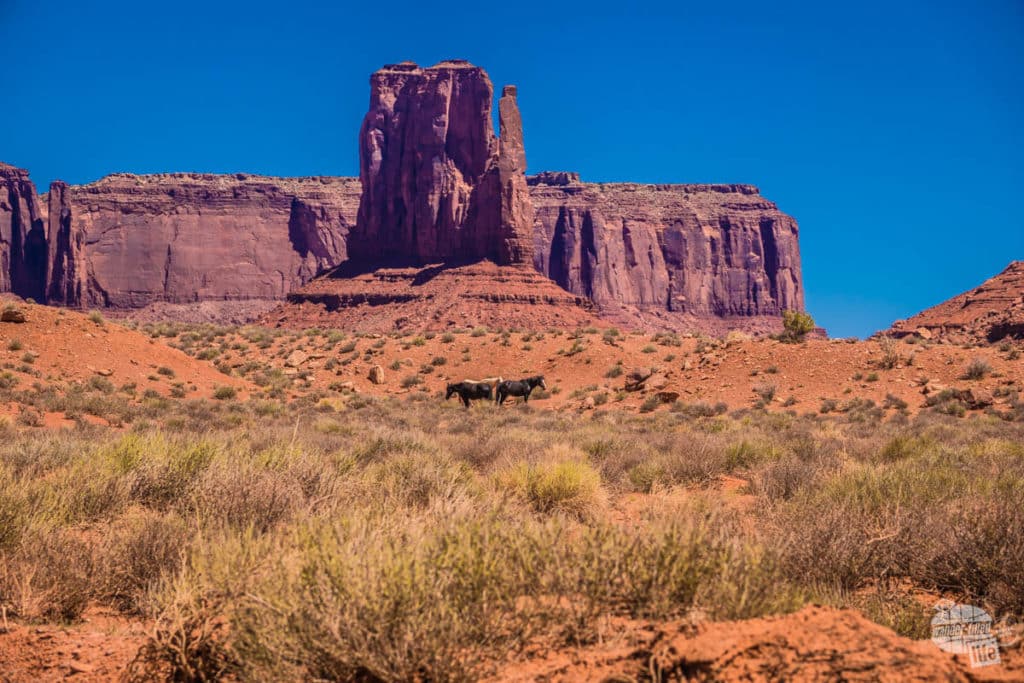
Find more articles on other parks in the Southwest.
Final Thoughts on Chaco Culture National Historical Park
Even though we’ve visited numerous archeological ruins and other Ancestral Puebloan sites, Chaco Culture National Historical Park still impressed us. There’s just something about its size and complexity that we haven’t seen at other sites.
Yes, it is difficult to reach. But, it is absolutely worth it. The one day we visited was cold and dreary and we only had a couple of hours. Still, we enjoyed walking around and through the great houses and peering into the kivas.
I’ll admit that after many different parks of Ancestral Puebloan ruins, it can get a little repetitive. Still, we find that we learn something new everywhere we go. Each site tells another part of the story. Seeing how it all weaves together really makes it come alive.
Travel Resources
What do you use to find a flight?
We use Skyscanner to find deals on flights. Skyscanner has a great interface and compares tons of airlines for the best pricing and routing. That said, it does not always have every airline and some airlines will have better deals on their website. Still, Skyscanner is a great place to start.
Click here to search for a flight.
What do you use to find a hotel?
We typically stay at Hilton properties, so we use the Hilton website. You can find good Hilton Honors discounts or AAA discounts for a hotel there. We make great use of our free night certificates from our Hilton Honors American Express.
Click here to book a Hilton property.
If there are no Hilton properties available, we use TripAdvisor to read reviews and book the hotel. We find we can get the best price that way.
Click here to search for a hotel.
We recently partnered with Stay22 to add interactive maps to each of our destination posts. This will allow you to see a plethora of hotels and vacation rentals all in one responsive map of the area.
What if I need more space than I can get at a hotel?
We use Vrbo for the times when we have rented a cabin for a weekend getaway, like this cabin in Townsend, TN, or needed to rent a house for a large family vacation. We had a great experience with them in terms of refunding deposits when COVID hit and will continue to use them.
Click here to search for a vacation rental.
Who do you use for rental cars?
As a general rule, we book with Hertz for rental cars. We have had nothing but good experiences with them. Plus, we really like unlimited mileage and not worrying about crossing state lines. We have even rented from Hertz overseas in both Slovenia and Croatia.
Click here to book a rental car.
How about booking a cruise?
We have found some amazing prices for booking a cruise through Cruise Direct. We have saved a lot of money on our cruises compared to what we found elsewhere, making a last-minute Bahamas cruise even cheaper.
Click here to book a cruise.
What if I want to rent an RV?
We highly recommend Outdoorsy for RV rentals. We rented a camper van for a week to visit Rocky Mountain National Park for the elk rut and Custer State Park for the Buffalo Round-Up and had a blast. The program was easy to use and we really enjoyed the freedom of having a camper van for that trip.
Click here to rent an RV.
What do you use for booking tours?
We don’t often book tours. Typically, we like to do stuff on our own. That said, there are some experiences you can’t have any other way. So, when we do want to book a tour, we always check Viator first.
Click here to book a tour.
Do you use anything to get discounts on the road?
We make extensive use of both Good Sam and AAA on the road. Good Sam is normally regarded as a discount card for RVers at campgrounds and Camping World but anyone can use the 5 cents off a gallon at the pump at both Pilot and Flying J.
Click here to get a Good Sam membership.
We have had AAA as long as we have been married and it has more than paid for itself in discounts at hotels, aside from the peace of mind of having roadside assistance. Add in paper maps and the ability to get an international driver’s license and it is more than worth it for any traveler out there.
Click here to get a AAA membership.
